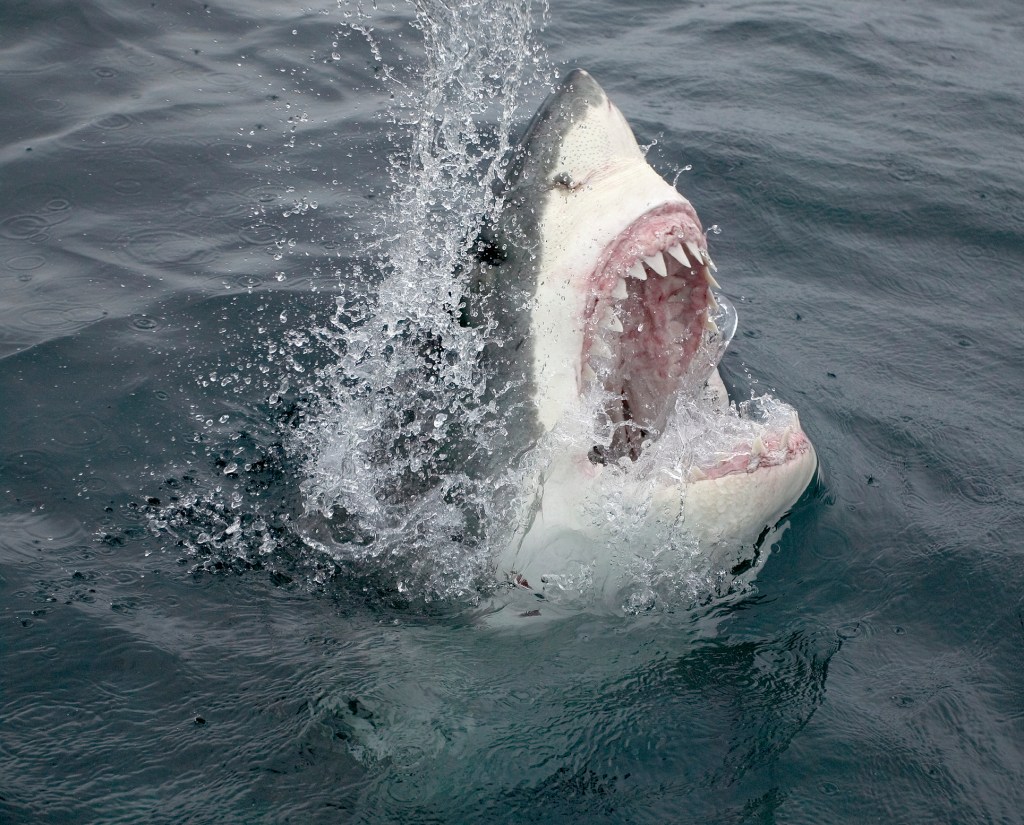Marine biologists have solved a fascinating ocean riddle—the purpose of the “white shark cafe,” a remote spot between Hawaii and Baja California, situated in the Pacific Ocean, where great whites congregate annually, en masse.
Could it be a mating area? Perhaps. Or a birthing ground? Less likely, due to its vast distance from coastal nurseries. Even weirder was the behavior of male sharks there. Tracking tags bolted to the sharks’ fins revealed that males would bob up and down, as many as 120 times per day and to depths reaching 1,400 feet. Females dove to deeper waters primarily during daylight hours.
Videos by VICE
Now, data from a scientific expedition led by Stanford University and the Monterey Bay Aquarium has answered our biggest questions about the cafe: The great whites traverse the ocean’s “mid-water zone,” a vast region with depths ranging from 660 feet to several miles, to feed on light-sensitive animals such as squid, phytoplankton, and small fish that inhabit it.
Read more: Newly Discovered Great White Nursery Is ‘Holy Grail’ of Shark Research
“It’s the largest migration of animals on Earth—a vertical migration that’s timed with the light cycle,” Salvador Jorgensen, a research scientist at the Monterey Bay Aquarium, told SFGate on Tuesday. “During the day they go just below where there is light and at night they come up nearer the surface to warmer, more productive waters under the cover of darkness.”
And where they go, the sharks follow, explaining the V-shaped “bounce dives” that male great whites are known for. Scientists had previously wavered on this possibility, since satellite imagery portrayed the area as a “vast desert.”

Last fall, researchers led by Stanford University marine biologist Barbara Block and Jorgensen affixed satellite and acoustic tags to 37 great white sharks. This spring, a team of oceanographers, marine ecologists, and molecular biologists set out on the research vessel Falkor, hoping to intercept the sharks at the mysterious spot.
“Just as we predicted, the sharks showed up,” Block told NPR this May.
The tags automatically released during the expedition, and insights from 10 of the 22 retrievable tags was collected, doubling 20 years of data compiled on shark diving behavior and environmental preferences in just three weeks, Block told SFGate. Prior to Falkor’s arrival, an autonomous sailing drone and autonomous underwater vehicle equipped with sonar listening devices were deployed to help the vessel home in on the sharks.
Together with these devices, plus information about water temperature, salinity, and environmental or e-DNA—genetic material that’s collected from the water to reveal the presence of sharks—the team now better understands the cafe’s purpose.
It is still unknown why female sharks don’t display the same diving behavior as their male counterparts. Jorgensen told SFGate that it could be related to mating, or that they’re simply eating something different.
In 2016 UNESCO’s World Heritage Center and the International Union for Conservation of Nature recommended that the white shark cafe be designated a World Heritage site. For that to happen, authorities must demonstrate its biological importance, which is an outcome the expeditions are certainly hoping for.




